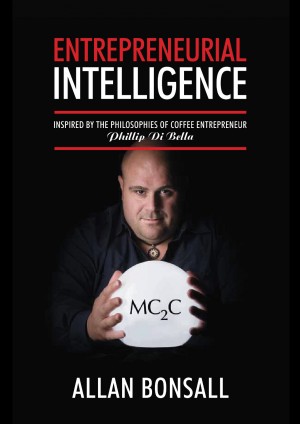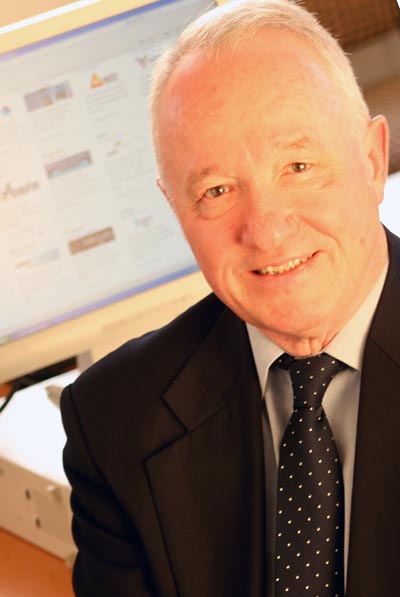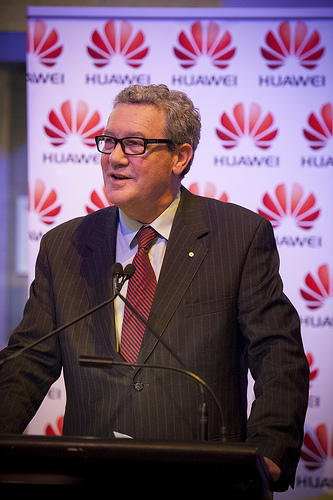Adams' book aims to help parents embrace children's technological world
TECHNOLOGY entrepreneur Yvette Adams has written a book to assist parents in understanding and adapting to the digital world of their children.
Last year’s Australian ICT Woman of the Year at the National iAwards, Ms Adams is a serial entrepreneur who operates The Creative Collective, a creative services and training agency, out of her commercial warehouse at seaside Maroochydore, Queensland. 
Today's kids are intuitively able to use every device, app, game and social network handed to them. Just give a tablet or a smart phone to a toddler and watch what happens.
Ms Adams, a mother of children aged seven and 10, said children desperately needed their parents to understand the technology they are using right now, and to embrace the technology themselves. Her book, being released steadily across Australia, is titled No Kidding – Why Our Kids Know More About Technology Than Us (and What We Can Do About It!) in an effort to help parents adapt to this digital world.
“There is no point in fighting technology or ignoring it. It’s not going away, and the sooner you embrace it, the better off you and your family will be,” Ms Adams said.
She has aimed the book at assisting parents to get started with technology and to understand how it can actually help, and not hinder family life through many practical applications. She outlines these benefits as technology to save time, technology to save money, technology to stay fit and health through to technology to be a creative family.
More than 500 websites and apps are showcased throughout the book. Industry leaders such as David Bartlett, who has been named one of the Top 50 Most Influential People in Technology in Australia, Andy Lark and Vanessa Garrard have contributed to the book.
Mr Lark is the former chief marketing and online officer at the Commonwealth Bank of Australia, who sits on the board of New Zealand technology venture capital firm No.8 Ventures. Ms Garrard leads E3 Style, the largest licensed youth electronics supplier in Australia and New Zealand.
Ms Adams is hopeful the book will become a valuable resource to influencers of children across the globe, such as government leaders, teachers, career advisors and grandparents.
“Even if you’re not convinced that technology is your thing, I’m hoping that you care as much about your child and their future as I do, and that you’ll give this technology thing your best shot for their sake,” Ms Adams said. 
“You see, for the first time in history, our children know more than us about something: technology. Just stop and think about that for a moment. It’s a crazy phenomenon.
“Since the dawn of time, cavemen and cavewomen have taught their children everything they needed to know to survive. Firstly, to hunt and gather and later to farm. Then, to cook, clean, sew, build and study, and, of course, to love and share.
“But then technology came along and turned every aspect of our lives on its head. Our kids just pick up devices and naturally know what to do with them,” she said.
“Love it or hate it, life is not the same as it once was. And it will keep on changing. So it’s time to get up to speed with technology and what it means to be a parent in the digital age.”
Ms Adams said the challenge before parents and influencers of children today was immense, dealing with information overload, rapid change and safety and privacy concerns.
“The fact that we are preparing them for jobs that don’t exist yet. Not to mention the giant digital footprints they are creating,” Ms Adams said.
But Adams said the book was most definitely not another negative tirade about the evils of social media or cyber safety issues, which though she does touch on, are only a minor aspect of the book. Instead, through it she hopes to introduce readers to the many positive benefits of technology.
“The short of it is, the kids need us to step up,” Ms Adams said. “You see, at the moment, we expect the education system and the government to do something about it, but the curriculum can’t keep up with the speed at which the world is changing.
"So kids desperately need their parents to understand the technology they are using right now and how the future is changing because of it. In the book I also explain the massive skills shortages going on right now in the ICT industry and how you can get your kids into coding and ICT for a guaranteed career.”
Ms Adams said she “never thought in a thousand years I’d work with computers”. She neither studied computers or even touched a typewriter at school, and never went to university.
Yet using technology to her advantage, she has started five businesses, two of which she has since sold, and she now actively champions the ICT industry and the use of technology in daily life and business.
Simply, she gets “a real kick out of helping people fall in love with technology too”.
Ms Adams won ICT Woman of the Year for Australia at the National iAwards in 2013, is a public speaker including recently compering EduTech, Australasia’s largest education and technology event with over 4000 delegates, and is a regular media commentator on topics related to trends, technology and social media.
Ms Adams won the Commonwealth Business Owner of the Year at the Telstra Business Women’s Awards in 2010 for Queensland and the Employer of Choice and the Entrepreneurial Award at the Women in Technology Awards 2012.
The Creative Collective operates as an innovative and versatile agency that helps people achieve online success through the building of websites and digital marketing strategies as well as through an extensive array of online and offline training.
Ms Adams said the business had already assisted thousands of small businesses across Australia and her motivation for writing the book was to help parents and people who potiively influence children to understand the impact technology is having on their families’ lives, and how to embrace it, not fear it.
www.thecreativecollective.com.au
ends

 How to resolve AdBlock issue?
How to resolve AdBlock issue? 




 Australia’s greenhouse gas emissions are expected to slow during 2013, with measured emissions expected to grow by just 0.4 percent from 2012 levels because of reduced output from the metals sector – where Australia’s market is in serious decline – and an increase in renewable power generation.
Australia’s greenhouse gas emissions are expected to slow during 2013, with measured emissions expected to grow by just 0.4 percent from 2012 levels because of reduced output from the metals sector – where Australia’s market is in serious decline – and an increase in renewable power generation.